28.08.2025 by Viktor Siebert
Yaskawa SGMGH-09DCA2H – Complete Overhaul Instead of Replacement
The SGMGH-09DCA2H that was sent to us was in very poor condition.
It had been running for many years in a machine for window frame production in the woodworking industry. Unlike in metal machining, it was not exposed to coolant emulsion, but it suffered from massive contamination due to wood dust, chips, and dirt.
Already upon opening, it became clear: the seals were brittle and no longer provided protection. Inside, we found wood residues that had penetrated deep into the bearings and the brake. The encoder appeared intact on the outside, but its signals showed dropouts. The brake caused overload and braking errors, and occasionally the control also reported encoder communication loss.
For the customer, the unit initially seemed to be a clear case for scrapping. But since the motor was about 15 years old and new replacements were no longer available on the market everything offered online was either used or of questionable refurbishment quality, we decided on a complete overhaul. We informed the customer about the possible costs. He agreed, as he had trusted our repairs for many years.
Work performed:
- Disassembly: Motor completely disassembled, old seals and bearings removed.
- Cleaning: Housing and rotor/stator cleaned in an immersion bath, then dried in the oven.
- Encoder: The defective UTSIH-B17CK was replaced, programmed, and matched to the servopack.
- Brake: Replacement of the Ogura brake SBR-112V-130B (24 VDC).
- Bearings: All precision ball bearings renewed.
- Connectors: Worn contacts replaced.
- Painting: Old paint removed, motor repainted optically like new.
Testing procedure:
The motor was tested on our Sigma II test bench with a Yaskawa SGDH-10DE servopack.
- Checklist: Encoder signal quality, brake test, no-load speed, load torque.
- Load test: Several hours under full-load operation.
- Final inspection: Vibration measurement, temperature rise, insulation test.
Result: A motor that once again operates like new quiet, vibration-free, and with full torque output.
Causes of encoder or motor failures
- Moisture & dust: Ingress through porous seals.
- Temperature fluctuations: Stress on encoder electronics.
- Vibrations: Long-term stress on encoder solder joints.
- Aging: Plastic components in the encoder become brittle.
- Cables & connectors: Loose contacts or corrosion cause signal loss.
Typical: The fault appears sporadically, disappears, then occurs more frequently – until final failure.
Preventive tips for customers
- Keep the environment dry and clean.
- Check seals regularly.
- Replace the encoder battery every 2–3 years.
- Inspect cables and connectors regularly.
- Plan a preventive overhaul every 5–7 years (bearings, seals, encoder).
- Avoid temperature shocks, and never start the motor in a damp condition.
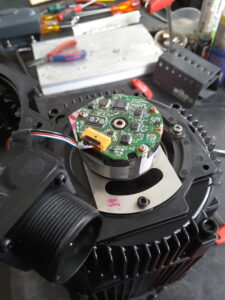
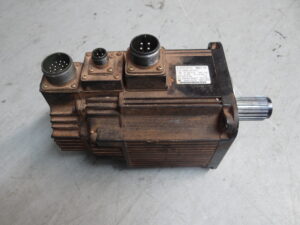
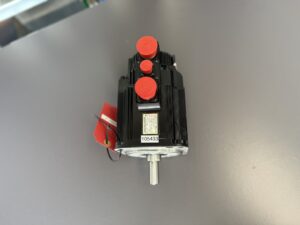
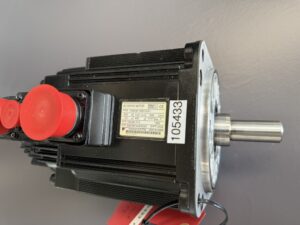
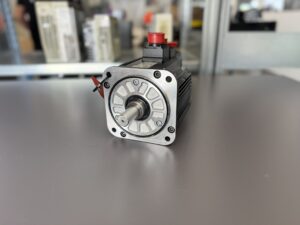
Information about the mentioned Servopack and Servomotor:
More information about our Yaskawa repairs can be found here.
📞 Feel free to contact us if you have any questions regarding your Yaskawa drive technology. Our experienced team is always ready to assist you.
Technical Specifications
| Feature | Value |
|---|
| Model | SGMGH-09DCA2H |
| Series | Sigma II |
| Rated Power | 850 W (0.85 kW) |
| Rated Current | 3.5 A |
| Rated Voltage | 400 V AC |
| Rated Torque | 5.39 Nm |
| Rated Speed | 1500 rpm |
| Encoder | Yaskawa UTSIH-B17CK, 17-bit incremental |
| Brake | Ogura SBR-112V-130B, 24 VDC |
| Insulation Class | F |
| Protection Class | IP54 (standard design) |
| Weight | approx. 9.6 kg |
| Origin | Made in Japan |
Application Environment & Compatible Devices
- Typical environment: woodworking, metal processing, CNC and automation systems.
- Main application: window frame production machines, CNC machining centers, packaging systems.
- Environmental conditions: resistant to standard industrial operation, but requires proper sealing against dust, chips, and particles.
- Compatible Servo Drives: Tested with Yaskawa SGDH-10DE and other SGDH Sigma II series drives.
Functional Description
The SGMGH-09DCA2H is a robust AC servo motor of the Sigma II series.
It combines precise torque control with smooth operation. The integrated 17-bit incremental encoder ensures positioning accuracy, while the 24 VDC spring-applied brake provides reliable holding at standstill. With insulation class F and protection class IP54, the motor is designed for long-term industrial use.
Alarm Messages & Troubleshooting
| Alarm Code | Description | Cause | Solution |
|---|
| A.02 | Parameter Breakdown | EEPROM failure | Replace/repair servo amplifier |
| A.05 | Servo motor/drive mismatch | Wrong combination | Use correct matching drive |
| A.10 | Overcurrent / Heat sink overheated | Excessive current, overheated IGBT | Check cooling, repair drive |
| A.30 | Regeneration error | Defective resistor or circuit | Replace regenerative resistor |
| A.40 | Overvoltage | Excessive DC bus voltage | Check power supply |
| A.41 | Undervoltage | Power supply too low/unstable | Stabilize supply |
| A.51 | Overspeed | Motor speed too high | Check load and parameters |
| A.71 | Overload (high load) | Operating under excessive torque for seconds | Reduce load |
| A.83 | Encoder battery error | Battery voltage dropped | Replace encoder battery |
| A.C9 | Encoder communication error | Communication between drive and encoder lost | Check encoder, cable, connectors |
Components
| Component | Description |
|---|
| Rotor | Permanent magnet rotor |
| Stator | Windings, insulation class F |
| Encoder | Yaskawa UTSIH-B17CK, 17-bit incremental |
| Brake | Ogura SBR-112V-130B, 24 VDC |
| Bearings | Precision deep groove ball bearings |
| Housing | Cast housing, repainted after overhaul |
| Seals | Shaft seals, cable entry seals |
| Connectors | Power and encoder connectors |